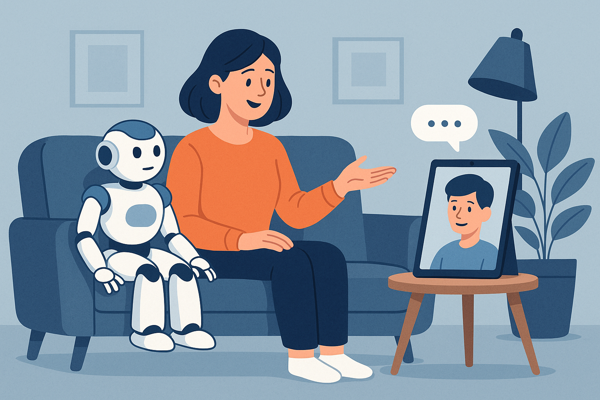Loneliness is becoming one of the most widespread health challenges of the 21st century. As people live longer and more independently, social isolation is increasingly common—not only among the elderly but across all age groups. With the rise of digital technology, a new question is emerging: Can technology help fill the emotional gaps in our lives? From social robots to AI-powered virtual companions, tech is stepping into an unexpected role: fighting loneliness.
In this article, we dive into how modern innovations are being used to reduce feelings of isolation, and whether these tools can truly substitute—or at least supplement—human connection.
Loneliness is not just about being alone. It’s the distress a person feels when their social relationships are not as fulfilling as they’d like. Research links chronic loneliness to depression, anxiety, weakened immunity, and even heart disease. The need for connection is deeply rooted in human biology, and when it’s unmet, the consequences can be serious.
As families become more spread out and many people now work remotely, traditional social structures have changed. In response, researchers, startups, and healthcare systems are increasingly turning to technology as a possible remedy.
One of the most promising tools in the fight against loneliness is the social robot—a machine designed to engage people emotionally and socially. These robots can talk, express emotions, respond to voice commands, and even recognize faces.
Take Paro, for example—a fluffy robot seal used in elderly care homes. It makes soothing sounds, reacts to touch, and creates a comforting presence for those with dementia or limited social contact. In many trials, patients showed improved mood and reduced anxiety after interacting with Paro.
Another example is Pepper, a humanoid robot that can recognize human emotions and respond with gestures, small talk, and music. These robots aren’t meant to replace people, but they can serve as companions in moments when human interaction isn’t available.
While some may find it odd to bond with a machine, early results suggest that people, especially the elderly, often form emotional attachments to these robots, and feel less alone in their presence.
With advances in artificial intelligence, virtual companions are becoming more human-like than ever. These AI-powered apps and avatars can hold conversations, offer advice, remember past chats, and even simulate empathy.
Apps like Replika, for instance, are designed to be always available “friends” that users can chat with at any time. Some users have reported that having a consistent, non-judgmental digital companion helps them feel heard, especially during late hours or when real friends aren’t reachable.
For people with social anxiety or those struggling with mental health, virtual companions can serve as a stepping stone toward re-engaging with real-world relationships.
However, it’s worth noting that while these apps may provide short-term comfort, they aren’t a complete replacement for human empathy or support from professionals when deeper emotional help is needed.
Pros:
- 🌐 Accessibility: Available 24/7, especially helpful for people in isolated or rural locations.
- 🧠 Consistency: Unlike humans, AI and robots don’t get tired, angry, or frustrated.
- 🛡️ Non-judgmental environment: People may feel freer to open up to a robot or AI than to another person.
- 📈 Emotional support: Can boost mood, reduce anxiety, and provide daily structure or conversation.
Cons:
- 🤖 Lack of true empathy: No matter how advanced, machines don’t truly understand emotions like humans do.
- 🔌 Over-reliance: Some users might withdraw from real-life interactions in favor of virtual ones.
- 💸 Cost and access: Advanced social robots can be expensive and not available to everyone.
These tools work best as a supplement to human interaction—not a replacement. For many, they serve as a useful bridge to reduce loneliness while still encouraging social development in the real world.
As technology becomes more integrated into daily life, the line between digital and emotional connection will likely continue to blur. The most promising future solutions may not come from choosing between humans and machines, but from blending the two.
Imagine a world where a virtual companion reminds you to call your sister, encourages you to go outside, or even helps schedule social events. In this scenario, tech doesn’t replace relationships—it strengthens them.
Furthermore, social robots could soon be integrated into schools, workplaces, and therapy sessions to offer additional emotional support, especially for those most at risk of isolation.
Technology can’t completely cure loneliness—but it can help ease it. Social robots and virtual companions are proving to be valuable tools in a society where real-world connection is often limited by time, distance, or circumstance.
Used wisely, these innovations can bring comfort, companionship, and a sense of presence to those who need it most. As our world becomes more digital, ensuring emotional well-being through tech is not just a possibility—it’s a necessity.
On our platform, we continue to follow the latest developments in mental health and technology, offering trustworthy insights and useful tools for your well-being. Stay with us for more updates on how innovation is reshaping human connection.
